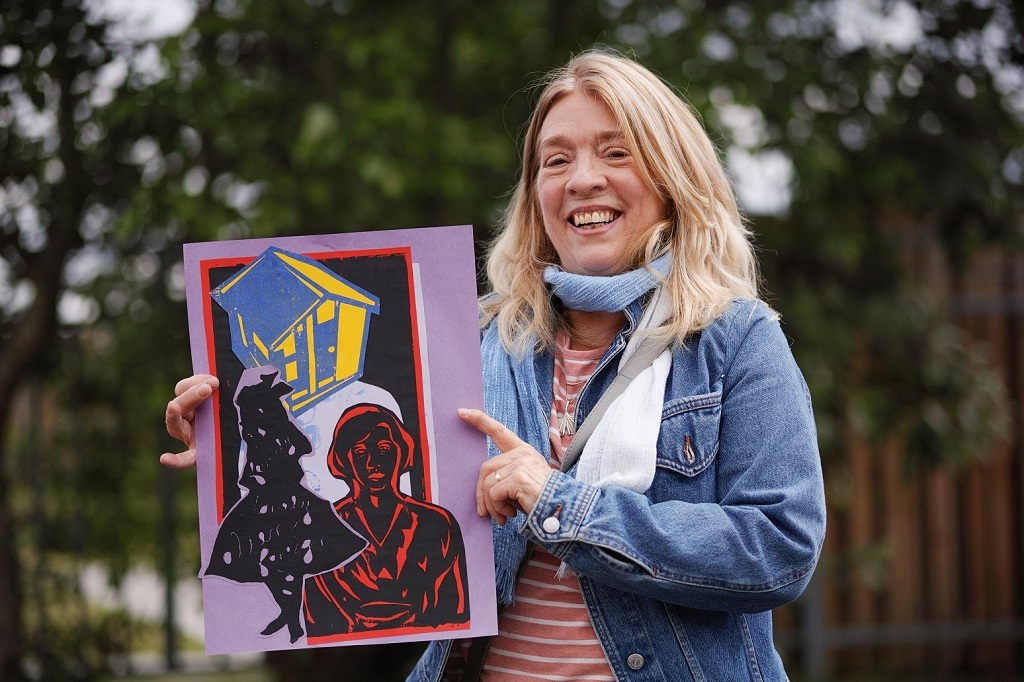
New exhibition inspired by ‘mother of Japanese whisky’
An inspirational Scotswoman dubbed ‘the mother of Japanese whisky’ is the focus of a fascinating new exhibition.
Rita Cowan swapped Kirkintilloch for Hokkaido when she crossed the globe to help create one of Japan’s most successful and best-known whisky distilleries.
Her story is one of courage, heartbreak and strength – and it has now been distilled into a new co-curated show at Kirkintilloch Hall.
Artist Elspeth Lamb worked with participants from East Dunbartonshire Women’s Aid and senior pupils at Kirkintilloch High school to create artworks celebrating the life and times of Rita and her husband.
‘Re-imagining Rita and Masataka Taketsuru’ opens to the public on Monday (28 May) and promises to be a unique glimpse into a creative spirit who remains a legend in her adopted homeland.
The exhibition is being held within Kirkintilloch Town Hall’s new dedicated heritage space – Made in Kirkintilloch – and is part of an arts and heritage learning programme created by East Dunbartonshire Leisure and Culture (EDLC) Trust and Trails & Tales.
Councillor Billy Hendry, convener of Place, Neighbourhood and Corporate Assets, said: ‘Rita’s story is an important part of Kirkintilloch’s heritage, attracting visitors from across the globe and especially from Japan, where she lived with her husband Masataka Taketsuru.
‘She led an amazing life – combining courage, culture, entrepreneurship and success.’

Artist Elspeth Lamb has been involved in creating the exhibition
Born in 1896, Rita’s destiny changed with the death of her fiancé in WWI and her father in 1918. This loss led to a family decision to take on a lodger, a young University of Glasgow student – Masataka Taketsuru – who was on a mission to uncover the art of Scottish whisky-making.
Despite protests from both families, the couple married in January 1920 and 10 months later Rita arrived in Japan, where she helped her husband build the world-renowned and trail-blazing Yoichi Distillery in Hokkaido.
Rita’s life in Japan was radically different from her Kirkintilloch home and that has helped to inform the exhibition.
Artist Elspeth Lamb has herself travelled and worked extensively in Japan, from its cities to its remote rural communities.
She said: ‘Moving to Japan must have been a monumental change for Rita, who by marrying a Japanese man and emigrating in the 1920s against the express wishes of both sets of parents, would have experienced extreme culture shock.’
Accounts suggest that Rita launched herself enthusiastically into her new life, speaking only Japanese and following local traditions.
However, Elspeth added: ‘I don’t doubt that Rita must have, at times, experienced terrible feelings of alienation, isolation and loneliness – especially during the war years when westerners were also regarded with much suspicion.’
Working with Elspeth, participants researched and responded to stories and items from the EDLC collections relating to Rita.
Rita’s kimono and obi sash – as well as graphics, Manga comics and photos – all offered inspiration for new ideas which were explored and interwoven with traditional Japanese print techniques.
Exhibits include a folded concertina printed book created by Women’s Aid participants, ‘zines’ from students at Kirkintilloch High School and a specially-commissioned series of silkscreen prints by Elspeth.
EDLC Trust chair Sandy Marshall said: ‘The exhibition is a reinterpretation of the life and times of a Kirkintilloch-born pioneer. Rita travelled across the world to be with the man she loved, helping to create the whisky industry in Japan.
‘Her legacy lives on, with the company – now known as Nikka – flourishing. Rita and her husband’s story was dramatised on Japanese TV and she remains a legendary figure in her adopted homeland.’
Re-imagining Rita and Masataka Taketsuru will run until 1 August 2018 and is open to the public – as is as the wider Made in Kirkintilloch facility – from 10am-4pm, Monday-Thursday, with occasional Saturday openings (restrictions may apply depending on bookings at the town hall).
TAGS

